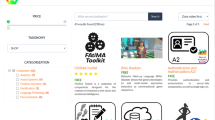Abstract
In this article, we introduce a visual debugger that helps us develop soccer agents for RoboCup soccer 3D simulation. The visual debugger enables us to graphically monitor the internal state of a soccer agent and the soccer field, such as joint angles, the position of objects, and text messages. We employ a server/client framework where the debugger acts as a server while the agent acts as a client. A soccer agent connects to the debugger using TCP/IP and sends information about the field and the internal status of the agent. The information that is sent from the soccer agent to the visual debugger consists of three parts: visible objects on the soccer field, the joint angles of the soccer agents, and text messages from the agents. These are shown as separate components on the screen of the debugger. The debugger draws the current pose of the soccer agent from the information on joint angles that are sent from the soccer server. Text messages are used as a debugging message. The developer of soccer agents is allowed to check if the developed agent works properly through the screen of the visual debugger. A soccer agent that is manually controlled using a game pad is also included as part of the debugger. Each of the above features is explained in detail.
Similar content being viewed by others
References
Stone P (2000) Layered learning in multiagent systems: a winning approach to robotic soccer. MIT Press, Cambridge
Reis LP, Lau N, Oliveira EC (2001) Situation-based strategic positioning for coordinating a team of homogeneous agents. Balancing reactivity and social deliberation in multi-agent systems. LNCS 2103:175–197
Grasemann U, Stronger D, Stone P (2007) A neural network-based approach to robot motion control. RoboCup 2007, Robot Soccer World Cup XI, pp 480–487
Luke S, Hohn C, Farris J, et al (1997) Co-evolving soccer softbot team coordination with genetic programming. RoboCup 1997, Robot Soccer World Cup I, pp 398–411
Nakashima T, Udo M, Ishibuchi H (2003) A fuzzy reinforcement learning for a ball interception problem. RoboCup 2003, Robot Soccer World Cup VII, pp 559–567
Kogler M, Obst O (2003) Simulation league: the next generation. RoboCup 2003, Robot Soccer World Cup VII, pp 458–469
Spark—A generic physical simulator. Sourceforge project. http://sourceforge.net/projects/simspark/files
rc-tools, released web page, http://rctools.sourceforge.jp/pukiwiki/
SoccerScope2003, released web page, http://ne.cs.uec.ac.jp/?newone/SoccerScope2003
Nao, Aldebaran web page, http://www.aldebaran-robotics.com
Author information
Authors and Affiliations
Corresponding author
Additional information
This work was presented in part at the 16th International Symposium on Artificial Life and Robotics, Oita, Japan, January 27–29, 2011
About this article
Cite this article
Nakamura, Y., Nakashima, T. A visual debugger for developing RoboCup soccer 3D agents. Artif Life Robotics 16, 219–223 (2011). https://doi.org/10.1007/s10015-011-0921-0
Received:
Accepted:
Published:
Issue Date:
DOI: https://doi.org/10.1007/s10015-011-0921-0




